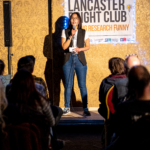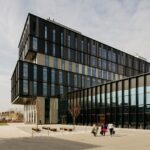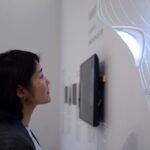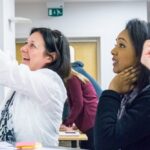Lancaster University’s Bright Club turns researchers into stand-up performers for a night. The programme recruits researchers who have a story to tell about their research challenges or successes and better prepares them to engage the public in doing so.
- Please provide a brief description of the KE project/ case study and why you believe it is considered good practice or innovative (and for whom). What challenge were you trying to achieve?
The Bright Club programme started in 2019 and recruits brave researchers who have a story to tell about their research challenges or successes and better prepares them to engage the public as they do so. We work with the researchers to build, shape and share these research stories in a live comedy venue to a paying, comedy-hungry audience. Then after the performance we coach them to adapt their learning for their own teaching, research and collaboration activities.
Each cohort of twelve undergoes an intensive workshop process with almost 30 researchers having gained new skills to support engagement through their research. Extending beyond Bright Club, we are now casting our comedy net wider to increase confidence within the wider campus community through non-performance based comedy workshops. 
-
Where did the idea for the project/ programme come from? Was this related to a strategic objective? How did you secure senior buy in?
The initial Bright Club was funded through our UKRI Impact Acceleration Account (IAA) to further embed impact and engagement in our research.
From the start, this was about culture change and how we engage with our research base to increase the effectiveness of their engagement with external stakeholders. The programme aligned with what our Pro-Vice-Chancellor-Engagement (PVCE) had talked about at length – the need to strengthen links between the city and the university. The PVCE was also instrumental in championing the importance of public and community engagement within the university and we have now funded a team specifically to support and embed engagement.
As part of our approach to building capacity within the university, we are undertaking a review of our wider KE and public engagement activity more broadly, and developing a learning and engagement portal with a suite of digital resources. This review will use a range of methods to discover what is needed in terms of tools and guidance, including the development of a toolkit so that we can bring all of our activities and programmes together.
-
What impact/ outcome has this project/ activity had on your university? Students? Local economy? Staff? Other external parties, e.g. businesses.
The direct impact is on the staff themselves with alumni from Bright Club citing this experience as helpful in gaining further research funding and fellowships.
An additional, unexpected impact is on writing and editing processes. Researchers can craft their research into informative and engaging nuggets of information in other settings where it’s a real skill to be able to tell your story in a focused and timely way. Bright Club alumni also create a supportive community for themselves and for others through the evolving Bright Club “Club”.
In terms of our institutional approach to public engagement and how this has been impacted, it is still early days, but engagement is now recognised as part of our academic promotions pathway. There has also been an increase in terms of the number of researchers being promoted via this pathway following their successful engagement activities.
We are also listening and learning more from our community. We launched our Connect webpages in March and recently refreshed our community events newsletter with more diverse content to help to bring the university closer to the wider community. Both were developed with input from external partners and our communities.
-
How did you measure impact?
We recognize that we have to become better at capturing impact through metrics and we do that through sector measures currently. Table 5 data for the Higher Education Business and Community Interaction (HE-BCI) survey, for example and the KEF narrative self-assessment score are both tools that help us to benchmark where we are and set out the next steps to enable us to move forward. This may mean investing in support for evaluation.
We currently have two KPIs related to engagement (including public engagement) – our performance in the KEF and our Higher Education Innovation Fund (HEIF) allocation.
-
What types of resources were required to implement this project?
We employ one full-time person who administers our public engagement portfolio. Within this, the Bright Club programme is relatively low cost for the impact it delivers in terms of creative staff time alongside an external IAA funded consultant. In future, we may fund it through HEIF.
-
Describe any challenges that you have had to overcome either before, during or after implementing this project?
Our biggest challenge is responding to demand for Bright Club, both in terms of who wants to do it and the audiences who want to buy tickets to see it. There is a groundswell of requests for practical support for workshops etc. and it is one of the reasons we want to develop toolkits – to grow our core capacity for support. We are able to respond to demand but don’t want to exhaust Bright Club as the only capacity building format. We have many other ideas to adapt and evolve how to build on our current activities.
In terms of wider engagement, we are also keen to diversify the ways we build capacity within different geographies such as through the British Science Festival, Glastonbury or the Edinburgh Festival. It’s also important for us to be more innovative and inclusive of new and different communities and audiences.
-
Next steps?
We are currently in discussion with the National Coordinating Centre for Public Engagement (NCPPE) to go through an Edge tool process and write a public engagement strategy.
Sitting alongside this, we want to listen more to our communities to ask what people want from the university to help develop our activities.











